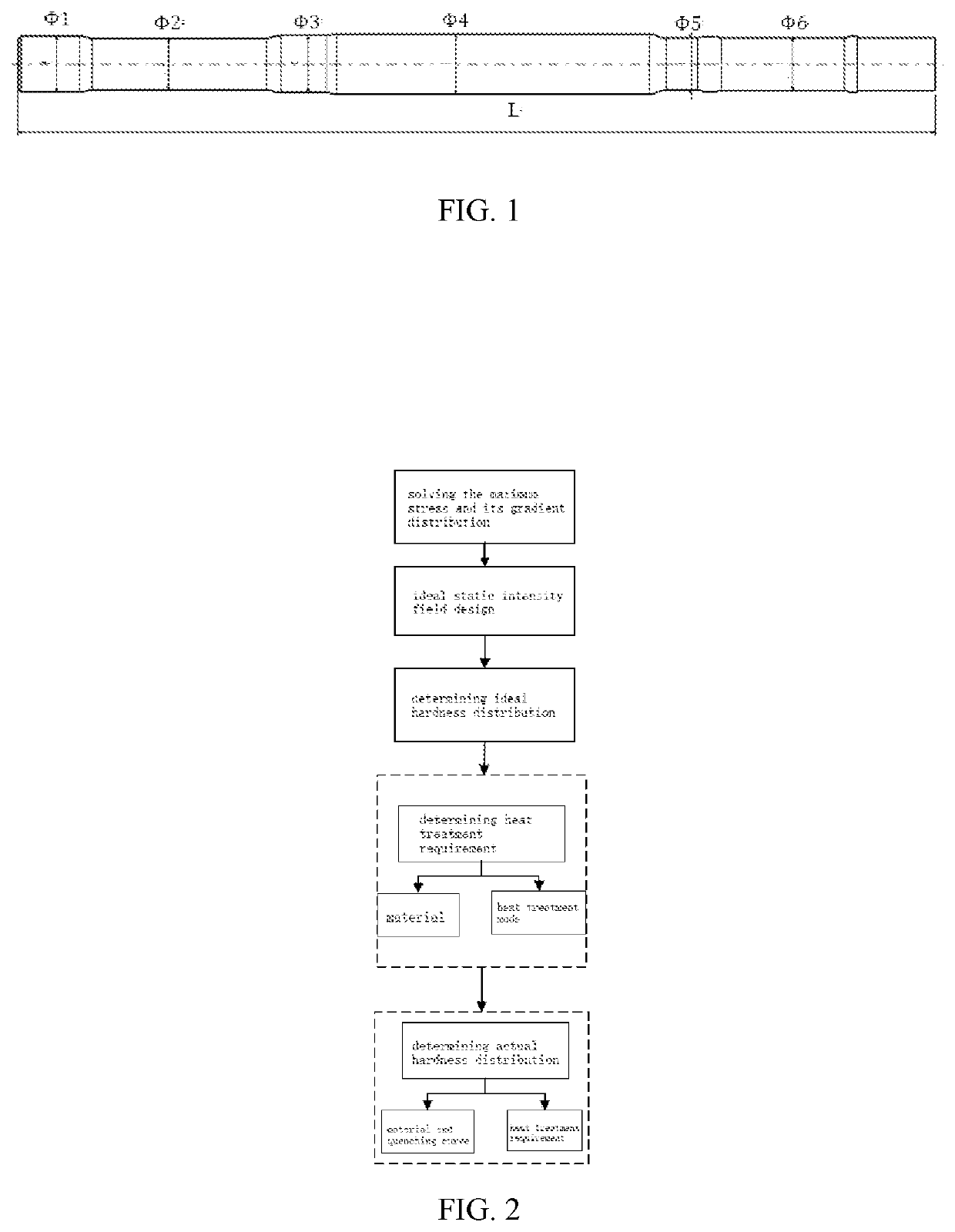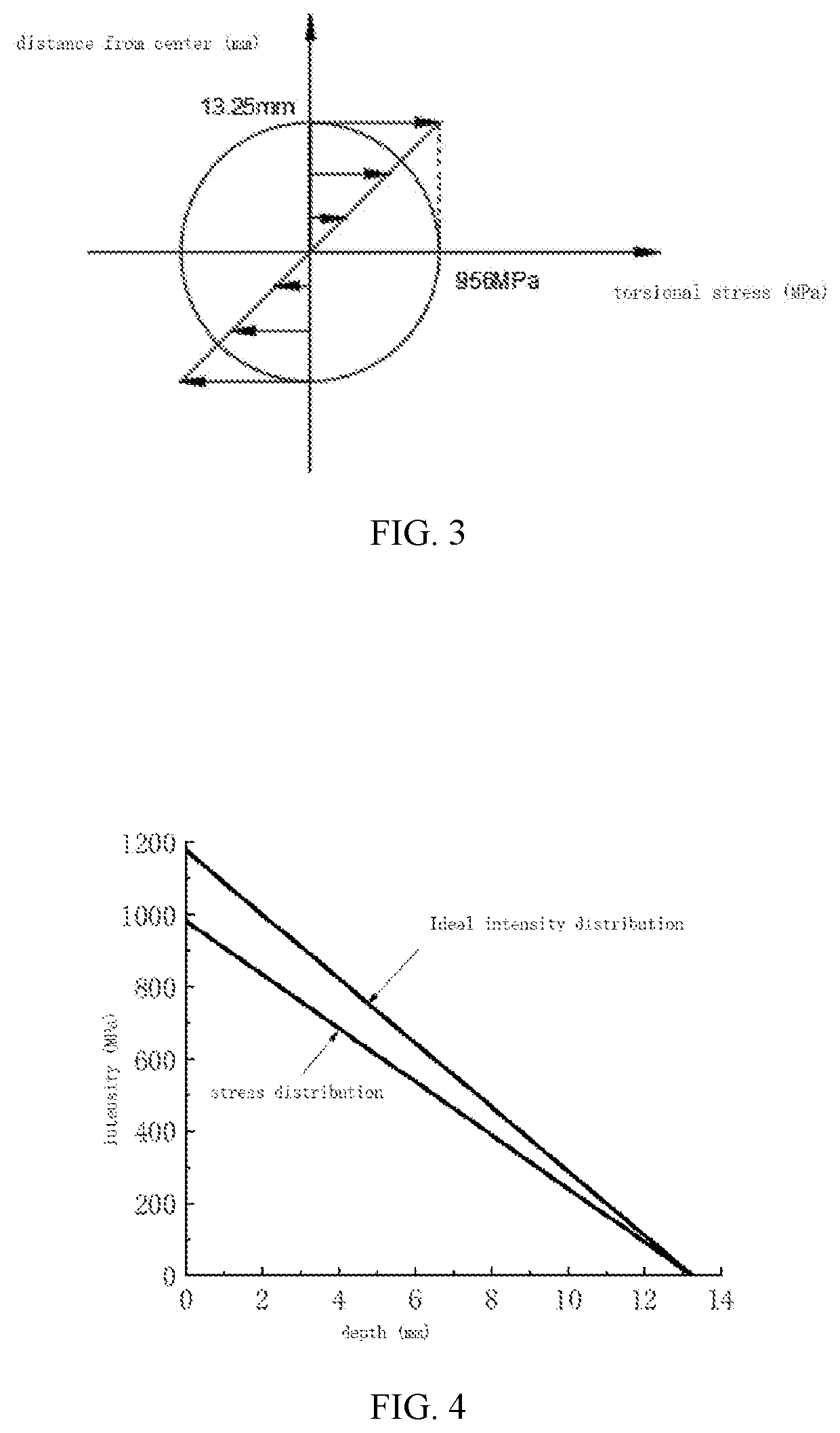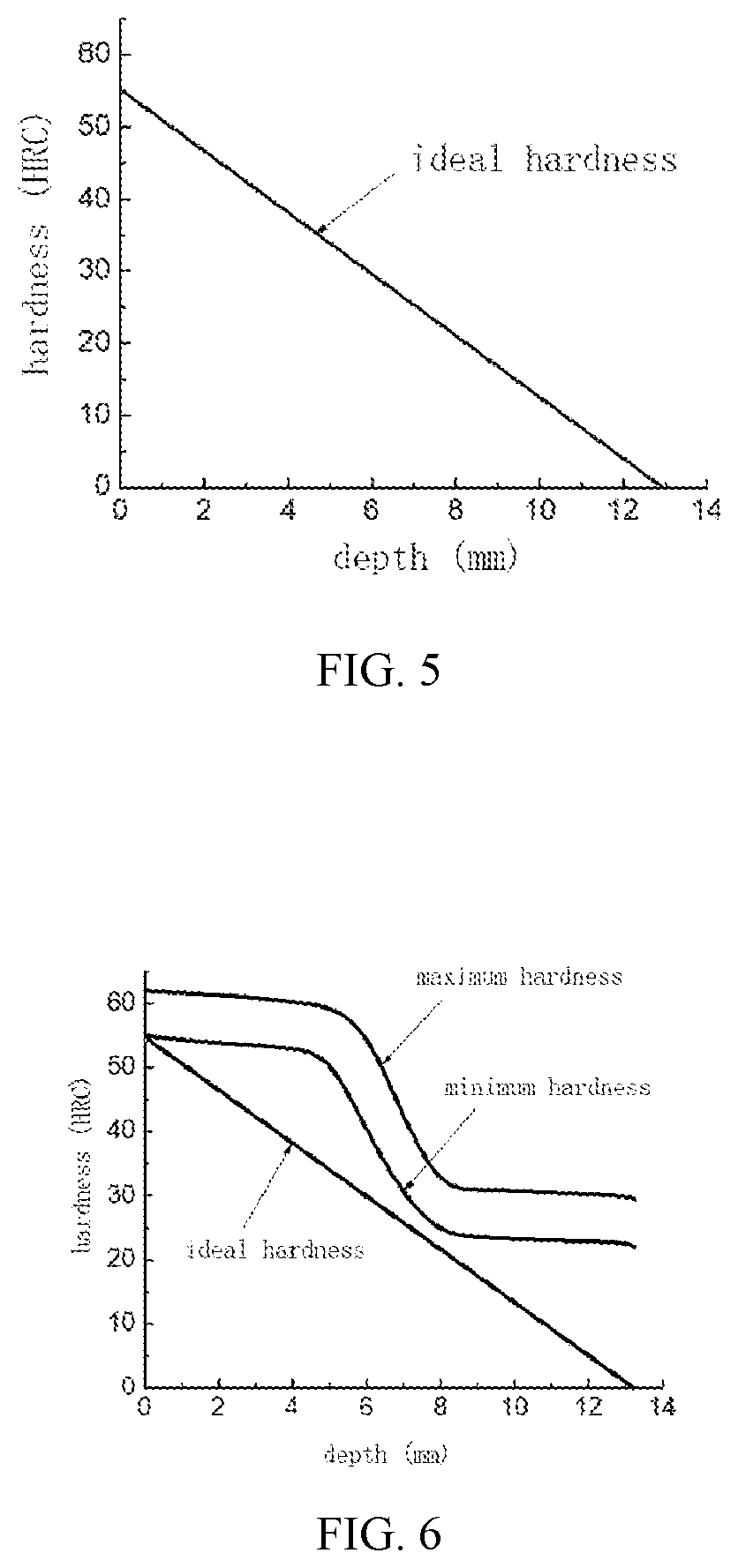Quantitative Matching Design Method for Structure Heat Treatment-Hardness Distribution
a technology of hardness distribution and quantitative matching design, applied in the field of structure hardness design, can solve the problems of quantitative hardness matching design in the hardness design process of mechanical structures and parts
- Summary
- Abstract
- Description
- Claims
- Application Information
AI Technical Summary
Benefits of technology
Problems solved by technology
Method used
Image
Examples
Embodiment Construction
[0020]The invention will be further elucidated with reference to the drawings. It should be understood that these examples are merely illustrative of the invention and are not intended to limit the scope of the invention. In addition, it will be understood that various changes and modifications may be made by those skilled in the art in light of the teachings of this invention, and equivalents fall within the scope of the appended claims of the present application.
[0021]The present embodiment takes a torsion of a solid shaft under a torsional load as an example. A material of the shaft is 40Cr steel, a minimum diameter of the shaft is 26.5 mm, a maximum diameter is 30.5 mm, and a length of the shaft is 468 mm. A limit torsional load experienced is 3500 Nm and dimensions are shown in FIG. 1. With reference to FIG. 2, the invention provides a quantitative matching design method for structure heat treatment-hardness distribution, comprising the following steps of:
[0022]1) Determining a...
PUM
 Login to View More
Login to View More Abstract
Description
Claims
Application Information
 Login to View More
Login to View More - R&D
- Intellectual Property
- Life Sciences
- Materials
- Tech Scout
- Unparalleled Data Quality
- Higher Quality Content
- 60% Fewer Hallucinations
Browse by: Latest US Patents, China's latest patents, Technical Efficacy Thesaurus, Application Domain, Technology Topic, Popular Technical Reports.
© 2025 PatSnap. All rights reserved.Legal|Privacy policy|Modern Slavery Act Transparency Statement|Sitemap|About US| Contact US: help@patsnap.com



